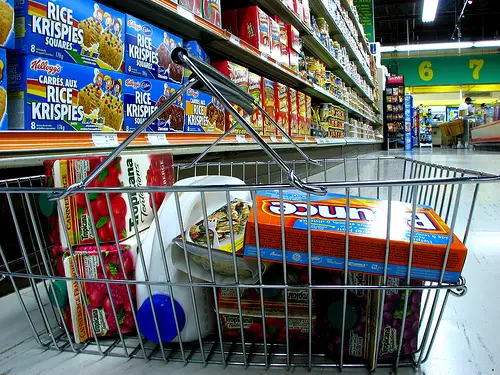 My wife and I recently had a child. Though we’d planned for additional expenses, managing our budget has nonetheless been tough at times, particularly because we’re operating on a single income.
My wife and I recently had a child. Though we’d planned for additional expenses, managing our budget has nonetheless been tough at times, particularly because we’re operating on a single income.
What we quickly realized when our daughter was born was that we were spending a lot more on food. That wasn’t entirely surprising, given that we had an extra mouth to feed. But what was surprising was that we were spending more money on eating out. We were ordering takeout much more to give us a break, since finding time to grocery shop and cook was difficult.
As you might imagine, once we started to get the hang of the whole parenting thing, we eased back into our regular routine of cooking the majority of our meals. And, to take things a step further, we agreed that we needed to save on grocery costs whenever and wherever we could to keep expenses down.
My American friends often ask me if it’s financially easier to raise a child north of the border. I imagine not, but I do think it’s of interest to hear about the techniques that Canadian parents like my wife an I use to keep costs down. I think it’s worth it for parents to compare notes no matter what their nationality.
Plan meals
Every Saturday morning, we sit together for a few minutes and decide what we want to eat for the following week. We factor in what we currently have in our fridge as well as what’s on sale at the grocery store to maximize our savings. Then we buy the groceries for the week.
We now rarely have that panicky ‘what are we eating tonight?’ moment that often leads to hastily-ordered food and alarmingly high credit card bills.
Use grocery apps
It may sound like a marketing ploy, but it’s true: you can save on groceries with the right apps. There are a ton of different grocery apps out there to choose from, but here are two Canadian-developed apps that I want to highlight for you:
Reebee – This grocery app allows you to browse flyers, create a shopping list, and search for products. Reebee shows the flyers of just about every retailer so you can quickly see what’s on sale. Remember, many grocery stores price match, so there’s probably no need to run around to a bunch of different stores in an attempt to hunt down every last sale item. Just show the flyer on your app and you’ll likely get a price match (just check your local store’s price matching policy first).
Checkout51 – Every week, Checkout51 has offers where you can earn cash back on items you’ve already purchased. All you need to do is take a picture of your receipt and the app will credit your account for selected items. Once you’ve reached $20 in savings, you can request a check.
Use cash back credit cards
You can supersize the amount you save on groceries by using cash back credit cards. In Canada you can earn up to 6% cash back on groceries, depending on what card you use. If your card doesn’t give you cash back on groceries, call the card’s issuer and find out if they offer another card that can help put more money back in your pocket after the checkout aisle.
Shop at discount grocery stores
Prices can vary dramatically depending on where you shop, so you need to do a bit of price comparing. You might like the idea of eating organic food all the time, but it’s a less appealing concept when reflected on your credit card bill. Keep in mind that many of the same products found at premium stores can also be found at discount grocery stores at a much lower price. I’ve found that I save on average between 15% and 25% by shopping at discount grocery stores even though I’m essentially buying the same products.
Some Canadians swear by shopping for groceries across the border, citing cheaper prices, but I’m skeptical of the real price differential after factoring in time and gas.
Determine per unit prices
Buying in bulk doesn’t automatically mean you’re getting the best price; you need to look at the unit price. For example if a 2-liter carton of milk costs you $1.90 and a 6-liter bag of milk costs $6, then you’re getting a better deal when buying cartons. The reason for this is that the per liter rate of the carton is $0.95 while the bag is costing you $1.
Final word
As your family grows, your expenses will naturally go up — no matter where you live. However, how much you spend on groceries is totally within your control. So consider all of the tips above and start saving on groceries now.
Photo Credit: Matt MacGillivray

Planning meals is a good choice for everyone. Very informative. Thanks.
You’re welcome, Abriella. Thanks for stopping by.